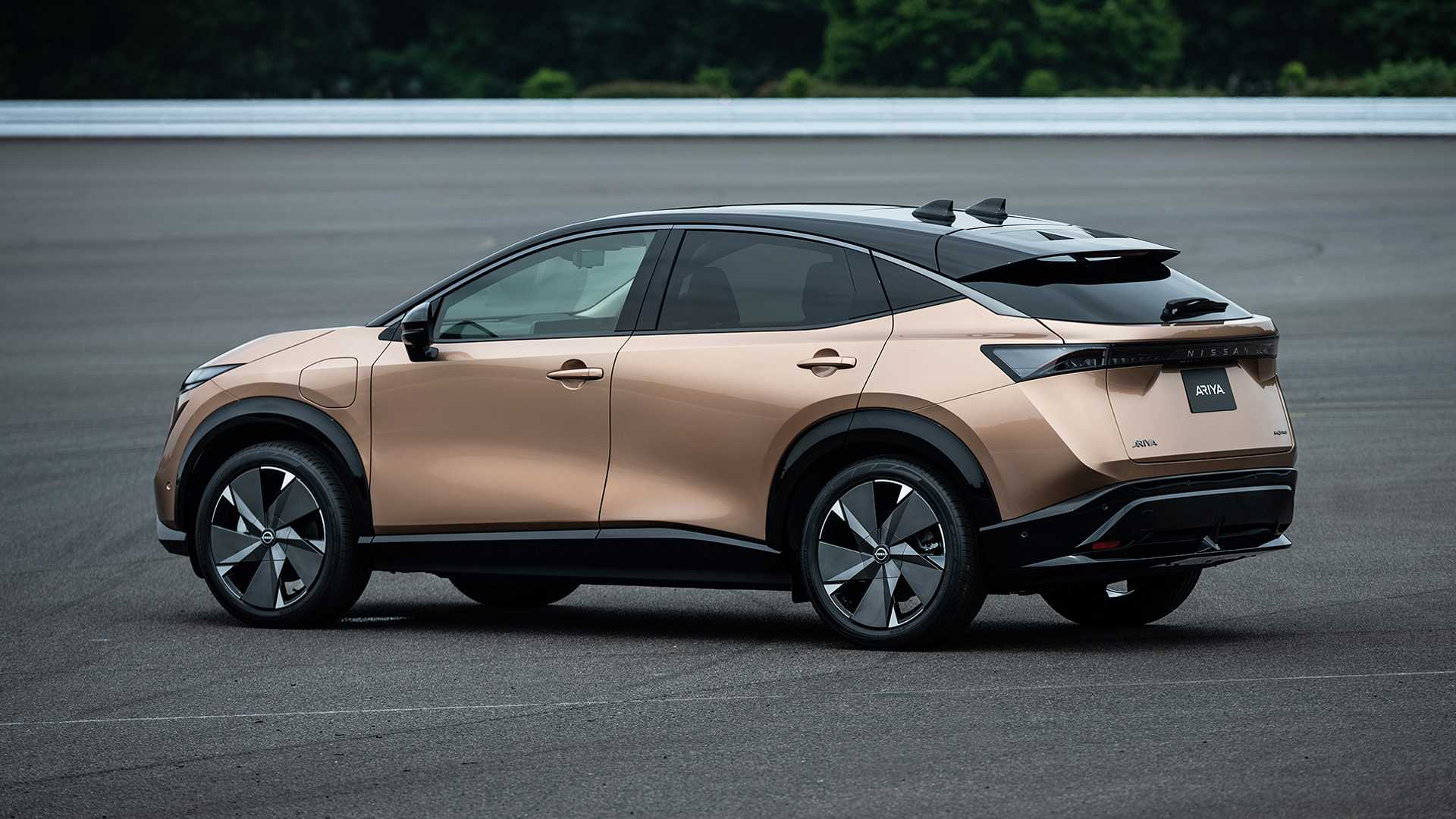Nissan today unveiled the Ariya, its new electric SUV. This model will be the first new-generation electric car of the Japanese firm and the one in charge of releasing the new corporate logo of the company, with more straight lines and backlit by 20 LEDs. The arrival of the Ariya on the market will take place throughout 2021.
Defined as a crossover coupe, the Nissan Ariya is the first model of the Renault-Nissan-Mitsubishi Alliance to settle on the CMF-EV modular platform, developed exclusively for electric cars. This architecture has allowed designers to achieve a very remarkable degree of flexibility, combining aesthetics and functionality.
Following the philosophy of «Japanese Timeless Futurism,» the Ariya is presented to us as an SUV with avant-garde but straight lines. On the front, we find very thin LED optics (formed by 2-centimeter mini-projectors), darkened and fused with the V-shaped fairing grille, which is framed by fang-shaped LED daytime running lights.
In the lateral line stand out the short hood, the soft drop of the roof, and the 19-inch wheels (20 inches as an option), while in the rear, the protagonists are the riders attached to the width of the gate and the diffuser. Aspects such as short overhangs or two-tone copper-colored bodywork (Akatsuki) reinforce the striking presence of the Japanese SUV.
Thanks to the CMF-EV platform’s use, the Ariya has one of the most spacious cabins in its class (it measures 4.59 meters long, so it is located in segment D). The climate control system is located under the hood, and the floor is flat, which translates into a better-used interior. At the same time, the Zero Gravity slim profile seats allow you to maximize legroom. The boot will hold 468 liters in the front-wheel-drive versions and 415 liters in the rear-wheel drive.
The Ariya’s minimalist dashboard blends in with the doors thanks to LED ambient light. The model lacks buttons since the climate control functions are integrated into a central panel made up of haptic controls, which vibrate when pressed to improve their feel. These controls only appear when the car is on.
The dashboard will highlight two large displays: 12.3-inch digital instrumentation and a 12.3-inch touch screen, oriented in a waveform to improve ergonomics. The selector lever has been designed to promote a relaxed, open-handed driving position, while the two-spoke steering wheel reinforces the technological aspect of the cabin. The rear passengers enjoy enormous head and legroom, while the front seats hide the B-pillar to offer a panoramic view of the exterior, giving a feeling of space enhanced by the sunroof.
The Nissan Ariya will be available in versions with one engine (front-wheel drive) and two engines (all-wheel drive). The latter will have the e-4ORCE all-wheel-drive system, developed from the ATTESA E-TS torque distribution system of the GT-R and the intelligent 4 × 4 system of the Patrol. This technology enables greater smoothness and stability to be achieved on any surface by precisely managing output power and braking, while also minimizing pitch and pitch by adding regenerative braking from the rear engine to that of the front.
Unlike the LEAF, which only had a CHAdeMO connector for fast charging, the Ariya will be offered a CCS Combo socket in Europe and the United States. The model will be able to access loads of 130 kW of power in direct current. AC charging will be limited to 7.4 kW on the 63 kWh Ariya while reaching 22 kW on the 87 kWh Ariya.
The car will have a multi-link rear suspension, while all versions will have three driving modes (Standard, Sport, and ECO), to which the Snow mode should be added in the e-4ORCE variants. The weight distribution will be close to 50/50, and the structural rigidity is very high thanks to the presence of the batteries on the underside. Furthermore, the car will be able to tow up to 1,500 kg.
As standard, the Ariya will feature the ProPILOT autonomous driving system with Navi-link, which will incorporate road data and detection technology to offer smoother motorway driving, adjusting speed based on the established limit and reducing the pace before to reach sharp turns.
The ProPILOT Park automatic parking system will also be available, as well as the ProPILOT 2.0 with automated lane changes in specific markets. Of course, the e-Pedal system released in the LEAF will not be missing, which will allow you to carry out the operation of a pedal thanks to the use of regenerative and mechanical braking.
In the security section, the 360º camera, the intelligent frontal collision control, the smart frontal anti-collision system, and the automatic rear anti-collision system will stand out. The model will feature OTA updates, a personal assistant with voice recognition and natural language understanding, and an app (NissanConnect) to control various parameters remotely.

